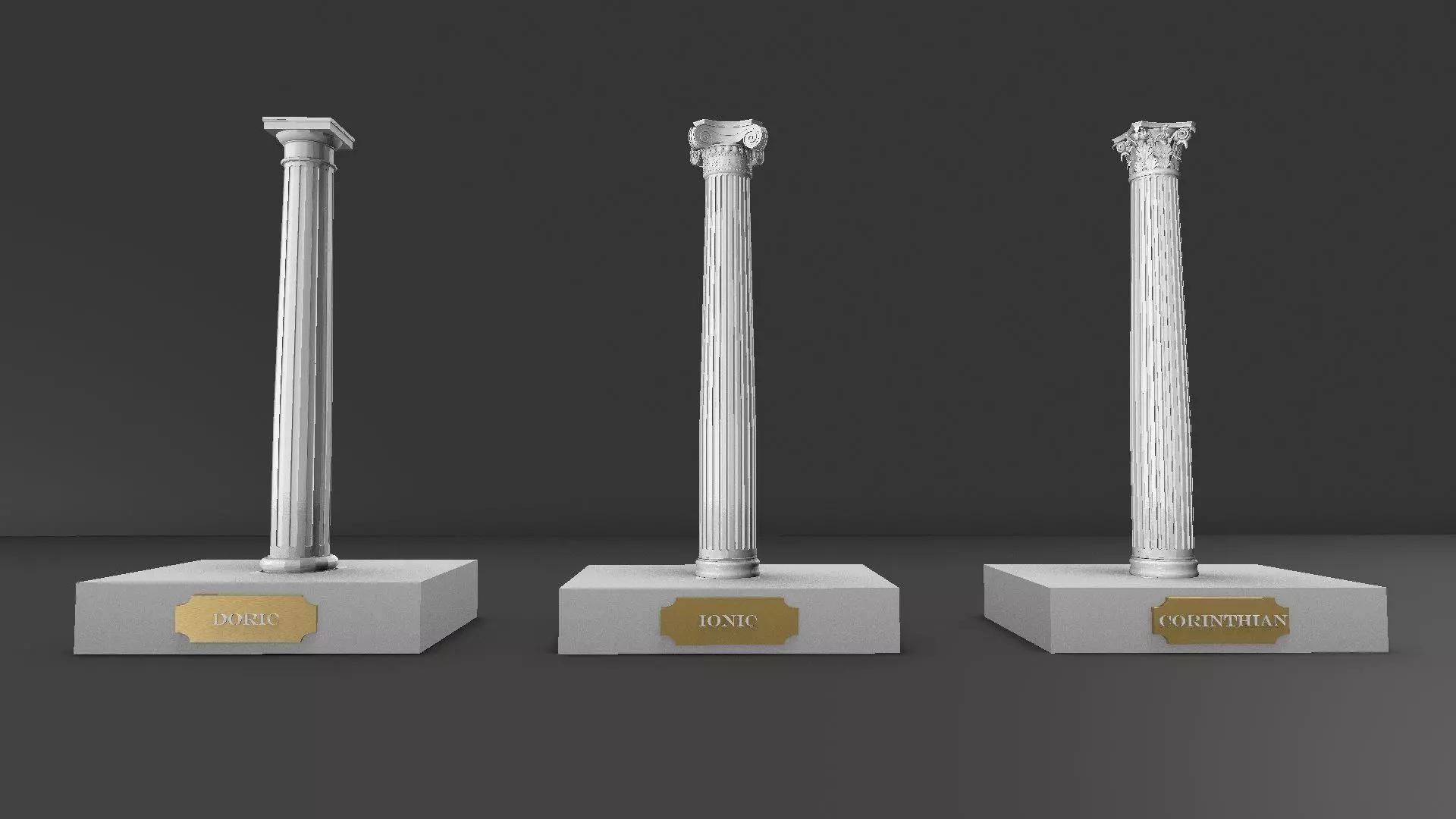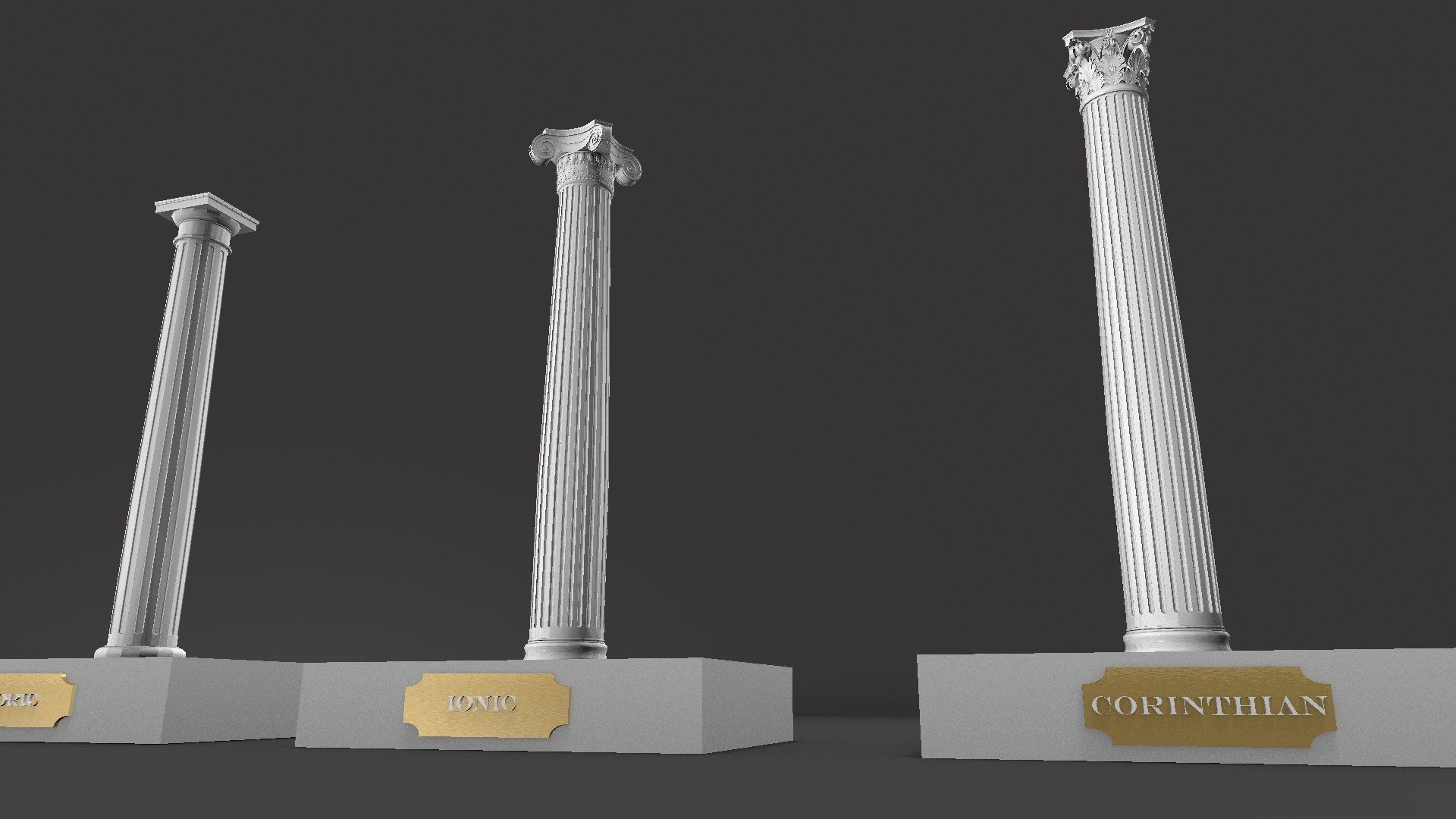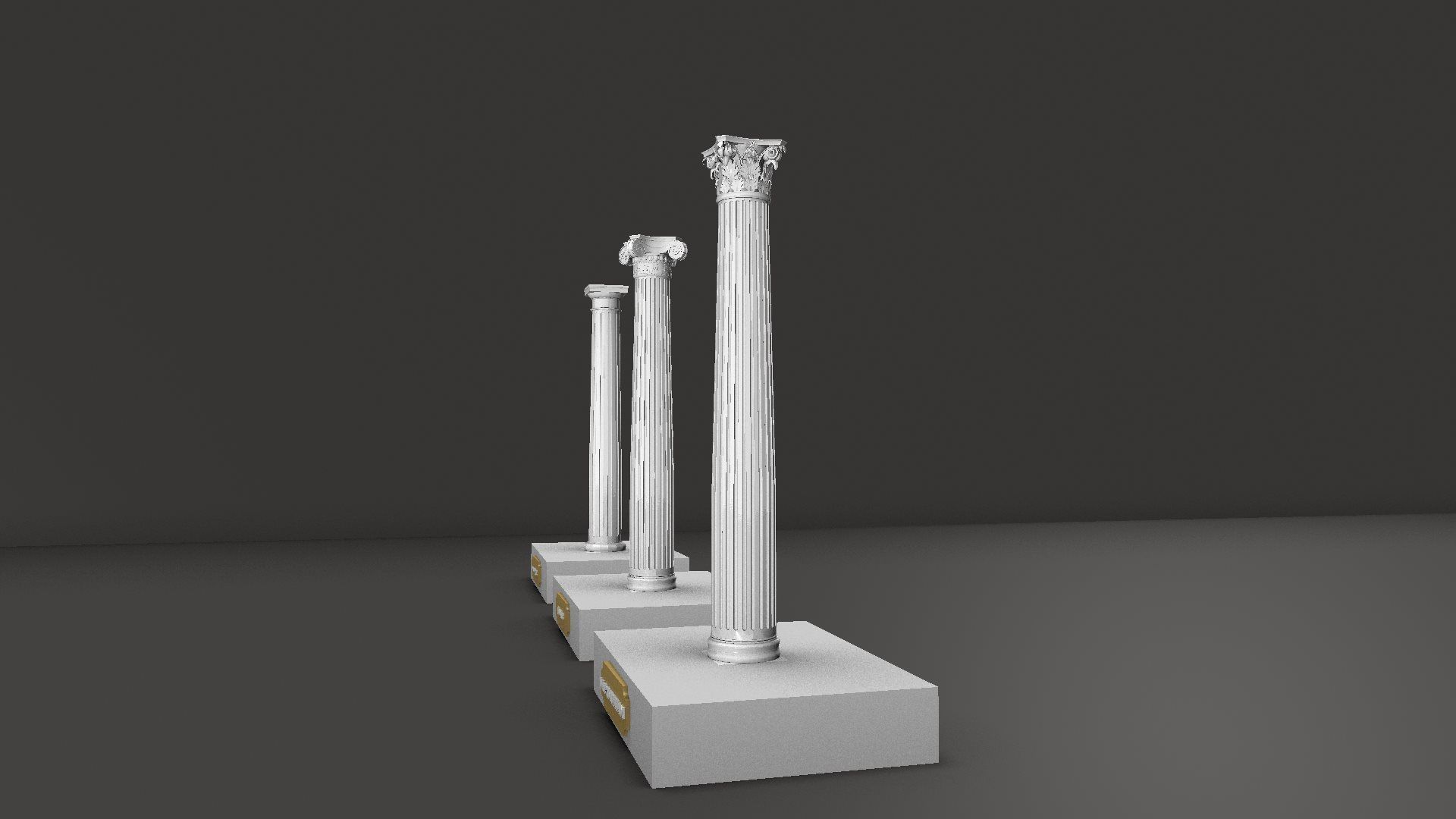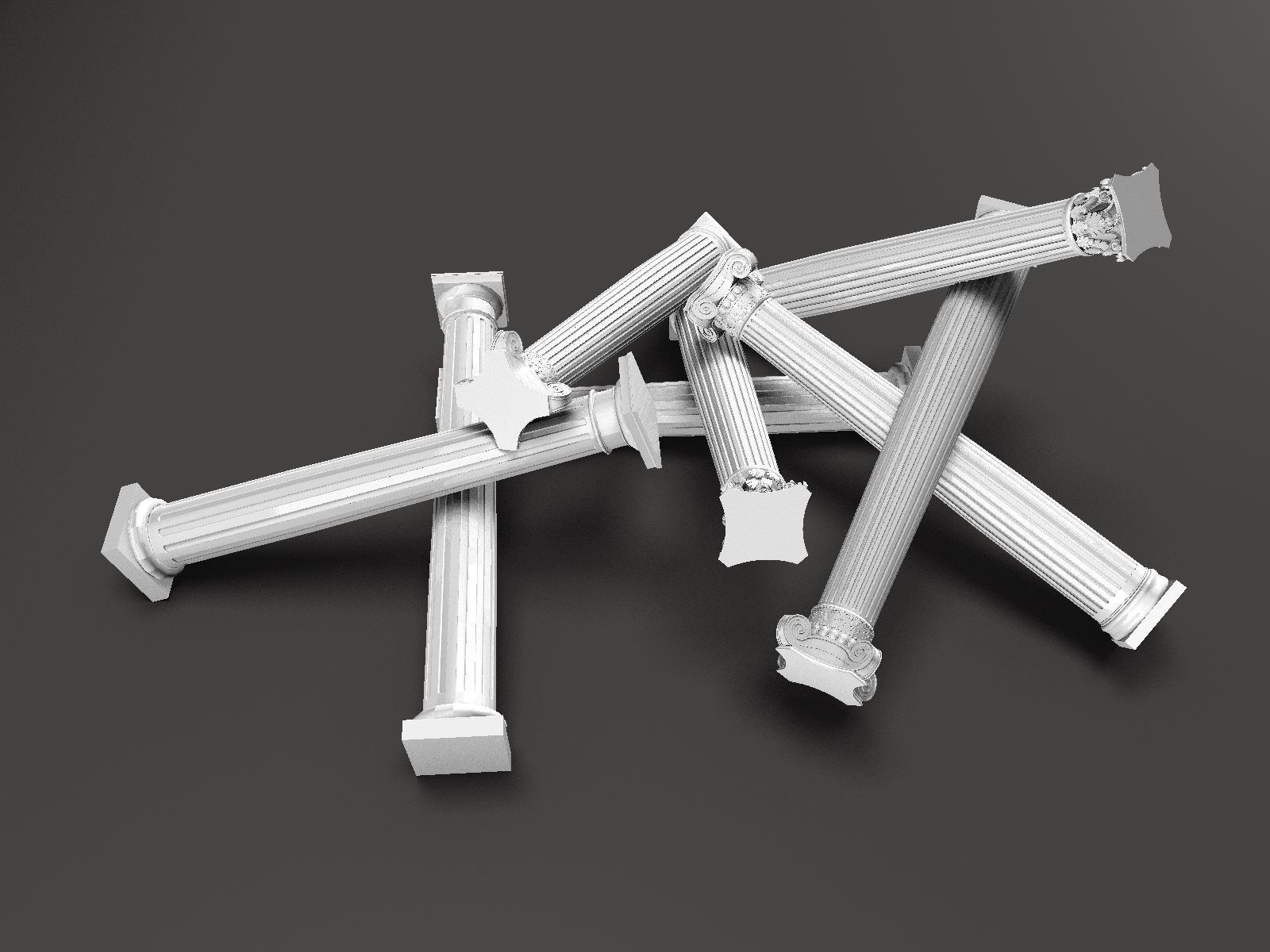
Classical Columns Doric Ionic Corinthian for educational use 3D print model
Around 500 BC, the Greeks developed three Orders of Architecture, using three distinct column styles. To learn more about these three classical column styles, I developed a learning tool which helps you remember which column style belongs to which miniature printed column. You need to place the right column in the appropriate foot. This way you can easily learn about the columns and remember the difference between column styles, which is very hard to remember by just looking at pictures in a book.
First of all, what is the purpose of columns? Well, columns may be designed to resist lateral forces, such as wind or an earthquake. Columns are frequently used to support beams on which the upper parts of walls or ceilings rest. Columns are so to speak a structural element, in addition it has decorative features. The ancient Greeks loved to use columns on the outside of a building as well, and the extensive use of columns on the interior and exterior of buildings in one of the most characteristic features of classical architecture.
- The first column style that you need to match with the right miniature printed column is ‘Doric’. This column is the oldest and most simple classical order build in ancient Greece. Doric column is much planer than the later Ionic and Corinthian columns. Doric column is also thicker and heavier. Therefore, Dorian columns are also associated with strength and masculinity. Believing that Doric columns could bear the most weight, ancient builders often used them for the lower level of multi-story buildings, reserving the more slender Ionic and Corinthian columns for the upper levels. So the Doric columns are originally placed directly on the ground without pedestal or base, nor a detailed capital. It is composed of a vertical cylinder that is wider at the bottom. The shaft is fluted (grooved) and the column had smooth round capitals (tops), but no carvings or other ornaments. - The second column that you need to match is ‘Ionic’. Ionic columns are more slender and more ornate that the earlier Doric style, an Ionic column has scroll-shaped ornaments on the capital, or top. Stands on a base of stacked disks. Shafts are usually fluted, but can be plain. A pair of volutes (scroll-shaped ornaments) decorates the capital.
- The third column that you need to match is ‘Corinthian’. Corinthian style is more complex and elaborate than the earlier Doric and Ionic styles. The capital, or top, has lavish ornaments carved to resemble leaves and flowers. The column had a fluted (grooved) shaft. The capital is decorated with scrolls, acanthus leaves, and flowers. Ornaments on the capital flare outwards, suggesting a sense of height. An example of a building which used all three of the classical styles is the Colosseum in Rome. On first level, the Doric columns, second level the Ionic columns, and third level the Corinthian columns.
• Try to match the columns with the appropriate foot on your own, without looking at the description of the column styles. When you are matching the columns try to keep in mind the distinct features of each column. Why are you matching that particular column with that particular foot? Explain your way of matching to yourself, that will help you to remember the different column styles.





